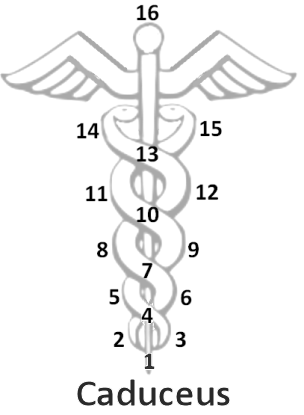
Myers Briggs theory is based on four psychological functions – Sensing, iNtuition, Thinking, and Feeling. They are used to perceive facts or possibilities, and make decisions using objective logic or subjective values. (The other letters of the Myers Briggs code – E, I, J and P – describe how those functions are used.)
Isabel Briggs Myers derived her theory from Psychological Types by C.G. Jung (Briggs Myers 1980, p. xvii). However, Jung’s book describes five psychological functions. The fifth, which he called the “transcendent function” (Jung 1921, p. 480), was the most important (Jung 1935). He also produced a paper on the transcendent function five years before publishing Psychological Types (Jung 1916/1957).
From the mid 1930s onwards, Jung expressed some frustration that the fifth function was being overlooked. For example, he complained that “most readers” were missing the main point of Psychological Types (Jung 1935). He also wrote a new foreword to it, pointing out the “error” of readers and their “regrettable misunderstanding” (Jung 1934, p. xiv). He asked people to read chapters II and V, which discussed the fifth function, rather than read chapter X which readers were using to classify people. However, this tactic did not work, and many readers continued to ignore the fifth function. For example, Isabel Briggs Myers made no mention of it in her book – though she did acknowledge that people can “ultimately transcend their type” (op. cit., p. 168).
Why has the fifth function been ignored?
There may be many reasons for Jung’s fifth function being overlooked. Jung suggested it was because of the natural and ubiquitous human desire to want to classify everything. However, the nature of the fifth function itself may also make it more difficult to understand and use.
The first four functions lend themselves to rational definition and classification because they have a consistent and known character for everyone. However, the fifth function is unique for each individual, and changes over time in an irrational way. Also, whereas one can make conscious use of the first four functions, the fifth function “is only usable in part as a method, the other part always remains an involuntary experience” (Jung 1939, p. 268).
The importance of the fifth function
The fifth function plays an important role in personal development (Stein 2006). Also, it is at or near the centre of most of Jung’s key concepts, linking all his theories (Miller 2004).
The function is of particular importance to those who use psychological type because it is not something you are born with, but emerges under a specific set of conditions. Jung said that the transcendent function does not emerge if you adhere to your psychological type preferences (Jung 1921, p. 480).
The fifth function’s importance may also be suggested by evidence from outside the field of analytical psychology. For example, it is well known that there are correlations between MBTI® scales and four dimensions in the five factor model of personality (Costa, Macrae 1989). However, there is also the potential for a link between Jung’s fifth function and the fifth factor. There has been no research to investigate this, but a superficial inspection of the two concepts suggests that there may be some links.
Practical implications
This theoretical difference has important implications for the way that you develop. Isabel Briggs Myers outlined a two stage process – developing the first/second functions, followed by the third/fourth (op. cit., p. 168). Jung also described two movements in development (Stein 2006), but his second stage is different because it is focused on the emergence of the fifth function. Learning about the transcendent function can therefore change the direction of your development.
There will be further pages at this blog about the transcendent function. For a book that discusses the topic, see The Transcendent Function by Jeffrey Miller, available from amazon.com or amazon.co.uk.
References
Briggs Myers, I. (1980), Gifts Differing (Palo Alto: Davies-Black Publishing, 1995)
Jung, C.G. (1916/1957), The Transcendent Function in The Structure and Dynamics of the Psyche (London: Routledge, 1969), pp. 67-91
Jung, C.G. (1934), Argentine Foreword in Jung, C.G. (1921), Psychological Types, (London: Routledge, 1971)
Jung, C.G. (1935), Letter to G.A. Farner, in C.G. Jung Letters, Volume 1, 1906-1950, edited by Gerhard Adler, (London: Routledge and Kegan Paul, 1976), pp. 186-7
Jung, C.G. (1939), Letter to W.E. Hocking, in C.G. Jung Letters, Volume 1, 1906-1950, edited by Gerhard Adler, (London: Routledge and Kegan Paul, 1976), pp. 269-70
McCrae, R.R., Costa P.T. (1989), Reinterpreting the Myers-Briggs Type Indicator from the perspective of the five-factor model of personality, in Journal of Personality, vol: 57.1, pp. 17-37 (Oxford: Wiley)
Miller, J.C. (2004), The Transcendent Function, (Albany: State University of New York Press)
Stein, M. (2006), The Principle of Individuation, (Wilmette: Chiron Publications)
